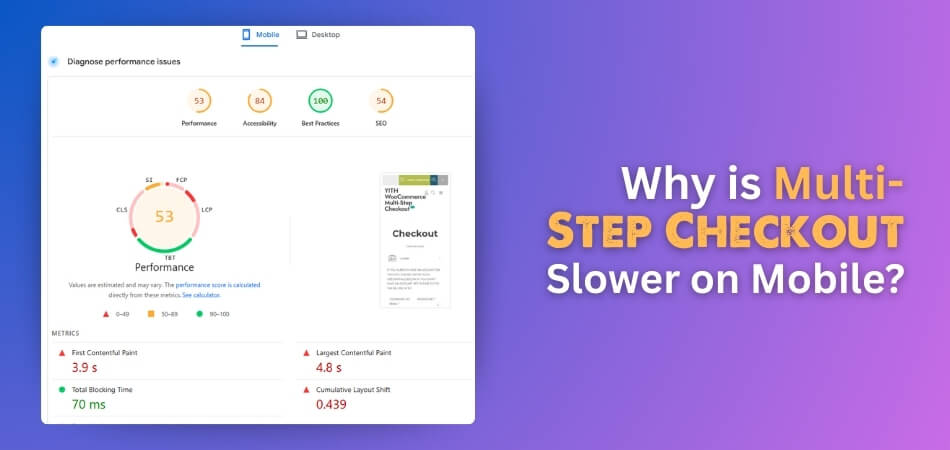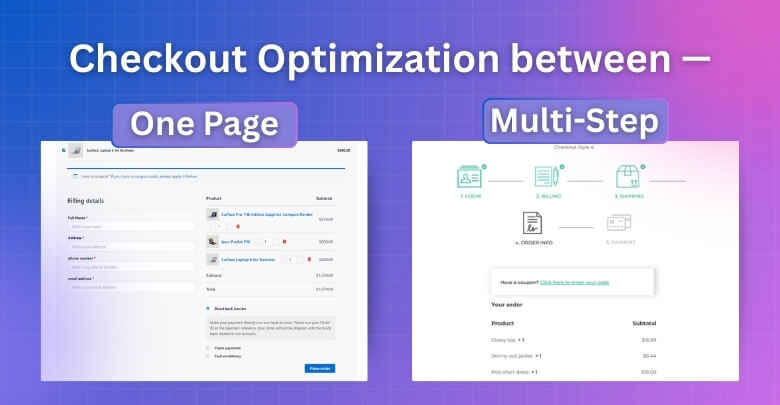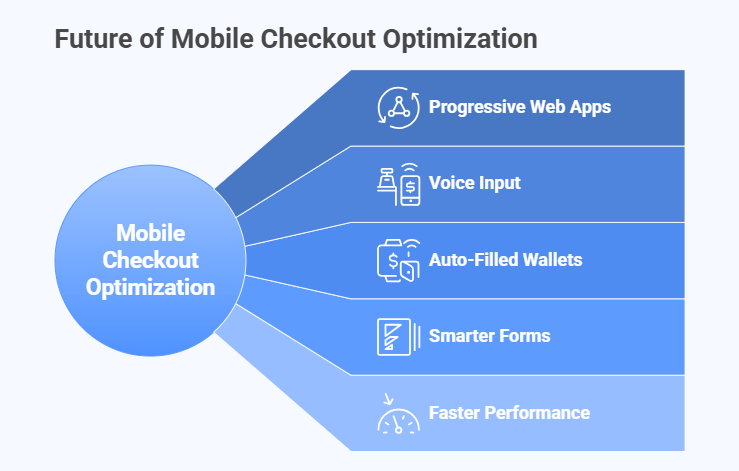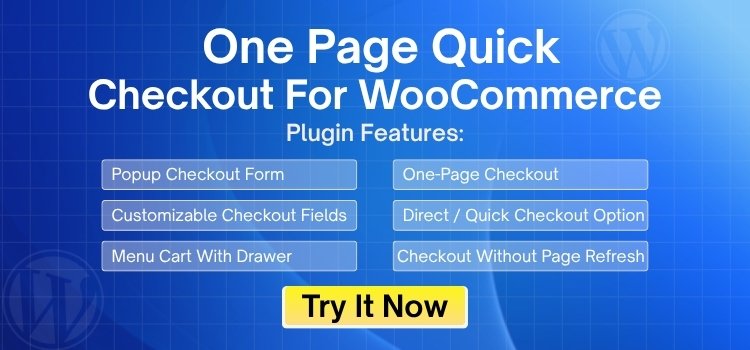Since multi-step checkout divides the process into smaller steps, it frequently feels like a longer road to payment. Each extra screen or form can add more time, especially on mobile devices, and many shoppers wonder why is multi-step checkout slower on mobile.
Multi-step checkout is slower on mobile due to extra page loads, heavy scripts, payment redirects, and form typing issues. Small screens, slow networks, and repeated data entry add friction. Each step increases wait time, causing users to abandon checkout. Simplifying steps improves mobile speed and conversion.
Do you want to understand how screen size, form design, and checkout style affect mobile speed? If yes, then keep reading this article, because here you will find every necessary detail that explains the complete picture about mobile checkout performance.
Why Is Multi-Step Checkout Slower on Mobile?
Multi-step checkout feels slower on mobile compared to desktop shopping. The reasons are connected with extra loading, typing, and slow responses. People want a quick and simple way to finish payments. Let’s see why mobile checkout feels longer and harder.

Page Loads
Every step often reloads or runs fresh code on checkout pages. On desktop, this feels small, but on mobile, it adds delays. Weak networks and slow responses make people frustrated while waiting. Each page takes longer to open, slowing the entire checkout process.
Heavy Code
Extra scripts such as analytics, chat boxes, and testing tools slow down phones. Computers handle these easily, but mobiles need more time to process. This heavier load makes pages slower and harder to complete. Shoppers often feel checkout takes forever due to slow code.
Payment Redirects
During checkout, customers are often redirected to payment gateways or banks. Each new page or view loads more slowly on mobile devices. Returning back after verification wastes more time for mobile users. Extra redirects make the checkout experience longer and frustrating compared to desktops.
Form Friction
Typing on a small screen feels slower and more frustrating overall. Scrolls take longer, and tiny buttons increase mistakes while typing. Keyboards often cover fields, making people lose track of forms. These small issues combine and make checkout take longer than expected.
Data Repetition
Checkout steps sometimes request the same details, such as addresses, again. On mobile, entering repeated information feels much slower and tiring. Slow typing and scrolling make this issue harder to manage. Customers feel frustrated when forms ask them for details multiple times.
Server Checks
Some sites check each step by sending data to their servers. This back-and-forth creates delays, especially on mobile networks with latency. Each round trip adds more seconds and wastes user time. People lose patience when waiting for each step to finish loading.
Back Steps
When users press back, the form often reloads or clears. This forces them to re-enter details already typed in earlier steps. Mobile users find this tiring since typing again feels slower. Extra reloading wastes precious time and slows down the full process.
Extra Media
Checkout pages include logos, icons, or shipping images that must load. On mobile networks, even small images take longer to appear. These small but noticeable delays slow the experience for users. Customers waiting for icons or logos get frustrated with wasted seconds.
Typing Problems
Badly designed forms fail to show the right keypad or autofill. Without these helpers, people must type details like numbers manually. Typing card numbers is slow, and mistakes happen very often. Many store owners use direct checkout for WooCommerce plugin to simplify checkout.
Multi-step checkout takes longer on mobile because of the many extra steps. Small issues like slow networks and repeated forms make it worse. Customers expect a smooth checkout without waiting long on their phones. Reducing steps and delays creates faster and friendlier mobile checkouts.
How Does Screen Size Affect Multi-Step Checkout Speed on Mobile?
Screen size plays a big role in how people experience checkout. Smaller screens mean different design choices, more adjustments, and sometimes added challenges. When the space feels tight, every extra step becomes noticeable. Let’s see how this affects checkout speed.
- Scrolling Needs: Smaller screens force people to scroll more often to view form fields, buttons, and details, making the process feel longer than on a bigger desktop screen.
- Extra Taps: Checkout steps on mobile often require multiple taps because buttons are small and hidden, slowing down progress compared to larger, visible desktop buttons.
- Keyboard Blocking: On-screen keyboards cover large parts of the form, so users must scroll up or down again, adding extra steps and time while checking out.
- Tiny Targets: Small tap targets like radio buttons or checkboxes lead to mistakes, forcing people to tap again, which adds delays during checkout.
- Field Visibility: Mobile screens rarely display entire forms at once, so users move back and forth, increasing the number of actions needed to finish.
- Error Fixing: Mistakes happen more often on small screens, and fixing them requires retyping or tapping again, which makes checkout take longer.
- Step Clarity: Desktop screens show multiple sections together, but mobiles break them apart, causing extra taps and slower understanding of checkout steps.
- Hidden Options: Some options, like shipping choices or payment methods, get tucked under drop-downs on mobiles, adding more clicks compared to visible desktop layouts.
- Review Trouble: Reviewing all details before payment is harder on smaller screens, requiring extra scrolling and extra time to double-check information.
- Visual Breaks: Large content chunks are split across multiple screens, so users must load and view them one by one, slowing overall checkout completion.
Smaller screens create more actions like scrolling, tapping, and rechecking, which slow down checkout. Customers notice these delays, especially compared to desktops. Simplifying mobile design and reducing steps can make the process smoother and much faster.
How Does Checkout Optimization Differ Between One-Page and Multi-Step?
Checkout design plays a big role in how smooth the buying process feels. Some stores prefer to keep everything on one page, while others spread details across multiple steps. Each style comes with pros and cons. Let’s explore the differences here.

Speed Focus
One-page checkouts can feel faster because everything is visible at once, while multi-step spreads fields across separate screens. Speed depends on design choices, because clutter or long loads make both methods frustrating for customers wanting a quick checkout.
User Effort
Effort changes depending on layout style. One-page checkouts reduce steps but may overwhelm users with too many visible fields. Multi-step requires more clicks, yet feels simpler as details appear in smaller pieces. Each format affects how tiring checkout feels overall.
Error Handling
Error fixing works differently for each style. In one-page checkout, mistakes can be spotted quickly, but clutter may increase confusion. In multi-step processes, mistakes may appear later, forcing backtracking. Mobile testing often reveals that single-page checkout mistakes like overcrowded fields can slow users down just as much as multi-step reloads.
Mobile Impact
Mobile devices respond differently to checkout types. One-page may look crowded on smaller screens, requiring heavy scrolling. Multi-step spreads fields neatly, but loading new screens slows things down. Choosing the right layout for mobile design makes checkout easier for smaller devices.
Conversion Results
Both checkout styles affect conversion rates in unique ways. One-page sometimes increases conversions by shortening the path, but clutter can reduce success. Multi-step may feel longer, but it provides structure. Businesses test both layouts carefully to see which creates better checkout results.
One-page and multi-step checkout have their own strengths and weaknesses. The right choice depends on design, device, and user comfort. When optimized correctly, both methods can make checkout easier, faster, and more effective for customers.
When Multi-Step Checkout May Still Be Necessary on Mobile?
Mobile checkout speed is important, but not every order can be simplified. Some industries and order types have extra rules or complex details. In such cases, skipping steps may not work well. Let’s look at situations where multi-step still makes sense.
Complex Orders
Orders that involve many products or special requests can be easier to manage if they’re split into steps. Customers get the chance to review smaller parts instead of facing everything at once. This slower approach helps reduce mistakes, making complex purchases smoother to handle even on mobile.
Compliance Needs
Industries like healthcare, finance, or legal services often require extra checks. Multi-step layouts ensure that important compliance forms and approvals are clearly completed. While slower, these steps protect businesses and customers by making sure no required detail is skipped accidentally.
B2B Purchases
Business-to-business orders often need detailed forms, extra shipping fields, or purchase approvals. Breaking them into steps makes the process clear and organized. Even though slower on mobile, it provides structure for businesses managing higher-value or complicated buying requirements effectively.
Payment Security
Some industries demand extra security checks before payments can go through. Splitting checkout into steps allows for stronger authentication, like identity verification or bank approvals. Although slower, these added layers help build trust and protect sensitive customer information during transactions.
Custom Options
Orders that allow heavy customization, like personalized products or bundled services, work better with multiple steps. Each stage handles a piece of customization, preventing confusion. Mobile users may spend longer, but the structured flow ensures accuracy when making personalized purchases.
Multi-step checkout may feel slower on mobile, but it serves important purposes. Complex, regulated, or high-value orders need structure for safety and accuracy. In such cases, extra steps help ensure smoother results for both businesses and customers.
Future of Mobile Checkout Optimization
Mobile checkout keeps changing as technology improves and shopping habits shift. Faster networks and smarter devices are shaping new ways to make payments easier. The focus is on reducing friction for users. Let’s look at what the future brings.

Progressive Web Apps
Stores are building progressive web apps that combine the best of apps and websites. These work faster, save data, and load smoothly. They reduce checkout friction by keeping pages light and responsive, giving users a smoother mobile shopping experience overall.
Voice Input
Voice technology is making checkout more hands-free and simpler. Instead of typing long details, people can fill out forms by speaking. This reduces typing errors and saves time, especially on smaller screens where tapping is harder and slower.
Auto-Filled Wallets
Digital wallets like Apple Pay and Google Pay save time during checkout. They automatically fill payment and address details in seconds. This convenience removes repeated typing, allowing users to complete purchases with just a single tap or quick authentication.
Smarter Forms
Future checkouts are expected to use better-designed forms that adapt quickly. These forms know what details are needed and offer the right keypad. They also reduce scrolling, making the entire process much simpler on mobile devices with smaller screens.
Faster Performance
With advances in mobile networks and responsive design, the gap between mobile vs desktop checkout performance is narrowing, though one-page flows remain key to improving speed. Faster responses and lighter designs will continue shaping checkout improvements in the coming years.
Mobile checkout optimization is moving toward simpler, faster, and smarter methods. Voice, wallets, and responsive design all play major roles. As these trends grow, users will enjoy smoother checkouts with fewer delays across different industries and devices.
FAQs About Why Is Multi-Step Checkout Slower on Mobile?
Many shoppers feel that multi-step checkout takes longer on mobile devices. Store owners often wonder why mobile checkout struggles compared to desktop and what other factors may play a role. Below are common questions and answers to explain the issue clearly.
Does Browser Choice Affect Checkout Speed?
Yes, the browser people use can make checkout faster or slower. Some mobile browsers are lighter and handle code better, while others lag. If the checkout page has heavy scripts, weaker browsers may take longer. A good browser choice helps improve checkout speed.
How Do Background Apps Slow Checkout?
Mobile devices often run many apps in the background. These apps use memory and processing power that could support checkout. When resources are divided, the checkout feels slower. Closing unused apps makes the process smoother and reduces loading delays.
Can Poor Form Design Increase Delays?
Yes, forms with unclear labels or messy layouts slow users down. Mobile users already type slower, so bad design makes it harder. When fields are not clear, mistakes happen, and retyping takes time. Cleaner and simpler forms keep checkout faster and easier.
Do Push Notifications Affect Checkout?
Frequent pop-ups or notifications can interrupt checkout progress. When shoppers switch screens, the checkout may reload or freeze. This wastes time and makes the process feel slower. Reducing interruptions helps customers stay focused until the payment is done.
How Does Battery Saving Mode Affect Checkout?
Many mobile users switch on battery saver when the power is low. This reduces device performance and slows page rendering. Checkout steps may lag more under these conditions. Encouraging light and optimized pages helps even in low-power modes.
Can Autocorrect Make Checkout Slower?
Autocorrect sometimes creates errors in form fields, especially names or addresses. Users then waste time correcting mistakes during checkout. On small mobile screens, this feels more tiring. Allowing autofill or better input support can prevent delays caused by autocorrect errors.
Does Mobile Storage Space Affect Speed?
Yes, devices with very little storage space run slower overall. Checkout pages take longer to load when memory is low. Heavy sites suffer more on such devices. Lightweight designs work better for users with older or storage-limited phones.
Can Multiple Tabs Slow Checkout?
Having many browser tabs open divides memory and reduces speed. Mobile devices have less power, so checkout tabs may reload or crash. Closing extra tabs helps checkout run more smoothly. A focused browser session makes the process quicker and more stable.
How Do Popups and Ads Affect Checkout?
Unnecessary ads or promotional pop-ups add extra loading for each step. On mobile, they take longer to render and often cover form fields. Users waste time closing them or waiting for them to disappear. Removing these distractions speeds up checkout greatly.
Does Screen Brightness Impact Checkout Performance?
While it may not seem related, screen brightness settings can reduce battery life faster. When the phone slows down to save energy, performance drops. This makes checkout pages lag more on weaker devices. Small optimizations on the site help offset such issues.
Conclusion
Mobile checkout may feel frustrating because of delays, extra taps, and repeated typing. All these small hurdles add up, and they explain clearly why is multi-step checkout slower on mobile. The reason lies in the added steps and heavier processes.
Improving checkout on mobile is possible with simpler layouts, lighter pages, and faster tools like wallets or autofill. Reducing unnecessary steps can save time and make customers happy. Wishing you smoother, quicker, and more enjoyable mobile shopping experiences.
